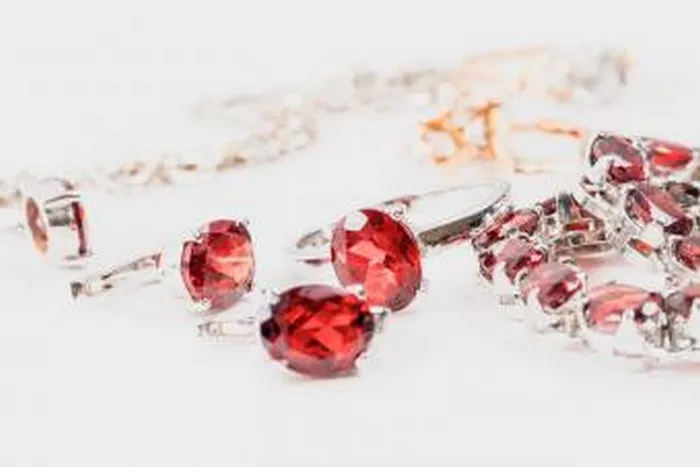In the realm of horology, every component within a watch movement plays a crucial role in ensuring precision, longevity, and aesthetic appeal. Among these components, rubies hold a special place. Beyond their breathtaking beauty, rubies are integral to the inner workings of mechanical timepieces, where they serve a multitude of functions that contribute to the smooth operation and reliability of watches. In this article, we delve into the multifaceted role of rubies in watchmaking, exploring their applications in friction reduction, jewel bearings, escapement mechanisms, shock absorption, aesthetic enhancement, and as quality indicators.
Friction Reduction
One of the primary roles of rubies in watchmaking is their use as bearings to reduce friction between moving parts within the watch movement. Synthetic rubies, meticulously crafted to precise dimensions, are employed as bearings in pivotal locations such as the balance wheel, pallet fork, and gear train. These synthetic rubies exhibit exceptional hardness, low friction coefficients, and excellent wear resistance, making them ideal for bearing applications. By minimizing friction, rubies ensure smoother operation of the movement while also reducing wear on critical components. This friction reduction not only enhances the efficiency of the watch but also contributes to its longevity, as reduced friction translates to less wear and tear over time.
Jewel Bearings
The historical significance of rubies as jewel bearings in mechanical watches cannot be overstated. Dating back to the 18th century, watchmakers recognized the exceptional properties of rubies—specifically their hardness, durability, and ability to withstand wear and tear. These qualities made rubies the perfect choice for use as bearings in the delicate and precise mechanisms of mechanical timepieces. Even today, rubies continue to be employed as jewel bearings in high-end watch movements, ensuring smooth and reliable operation for generations to come.
Escapement Mechanism
In the intricate world of horology, precision is paramount, and the escapement mechanism lies at the heart of this pursuit. Rubies play a critical role in the escapement mechanism, which regulates the movement of the watch and determines its accuracy. Within the escapement, synthetic rubies are used as pallet stones, providing a smooth surface for the pallet fork to interact with the escape wheel. The precision and low friction properties of rubies are essential here, as any deviation or irregularity in the escapement mechanism can result in inaccurate timekeeping. By utilizing rubies in this pivotal component, watchmakers ensure precise and reliable timekeeping, even in the most demanding conditions.
Shock Absorption
In addition to their role in reducing friction and enhancing precision, rubies also serve as effective shock absorbers within watch movements. The inherent resilience of rubies allows them to absorb shocks and vibrations, protecting delicate components from damage. This is particularly crucial in sports watches or those designed for rugged use, where the watch may be subjected to significant impacts or sudden movements. By strategically placing rubies within the movement, watchmakers can safeguard critical components and maintain the accuracy and integrity of the timepiece, even in the face of adverse conditions.
Aesthetic Appeal
Beyond their functional roles, rubies also contribute to the aesthetic appeal of watch movements, adding a touch of luxury and sophistication. In high-end timepieces, rubies are often used in visible parts of the movement, such as the balance wheel or the jewel settings, where they catch the light and create a mesmerizing visual effect. The deep red hue of rubies contrasts beautifully with the metallic components of the movement, enhancing its overall elegance and allure. This marriage of form and function underscores the timeless appeal of rubies in watchmaking, elevating the aesthetic experience for connoisseurs and enthusiasts alike.
Quality Indicators
In the world of watchmaking, the number of rubies within a movement is often used as a quality indicator. Phrases such as “17 jewels” or “25 jewels” denote the number of synthetic rubies used as bearings and jewel bearings within the movement. A higher jewel count typically signifies a more sophisticated and finely crafted movement, as it indicates greater attention to detail and precision. Watch aficionados often seek out timepieces with higher jewel counts, recognizing them as symbols of superior craftsmanship and engineering excellence. Thus, the presence of rubies serves not only as a functional necessity but also as a hallmark of quality and prestige within the world of horology.
Conclusion
In the intricate tapestry of watchmaking, rubies stand as shining examples of innovation, precision, and timeless beauty. From their role in reducing friction and enhancing efficiency to their use as jewel bearings and shock absorbers, rubies play a multitude of vital roles within mechanical timepieces. Their durability, hardness, and aesthetic appeal have made them indispensable to watchmakers for centuries, and their legacy continues to endure in the modern era of horology. As symbols of quality and craftsmanship, rubies exemplify the marriage of art and engineering, enriching the world of watchmaking with their unique blend of form and function.


